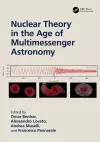
Nuclear Theory in the Age of Multimessenger Astronomy
4 contributors - Hardback
£110.00
Omar Benhar is an INFN Emeritus Research Director, and has been teaching Relativistic Quantum Mechanics, Quantum Electrodynamics and Structure of Compact Stars at “Sapienza” University of Rome for over twenty years. He has worked extensively in the United States, and since 2013 has served as an adjunct professor at the Center for Neutrino Physics of Virginia Polytechnic Institute and State University. Prof. Benhar has authored or co-authored three textbooks on Relativistic Quantum Mechanics, Gauge Theories, and Structure and Dynamics of Compact Stars, and published more than one hundred scientific papers on the theory of many-particle systems, the structure of compact stars and the electroweak interactions of nuclei.
Alessandro Lovato is a physicist at Argonne National Laboratory and an INFN researcher in Trento. His research in theoretical nuclear physics focuses on consistently modeling the self-emerging properties of atomic nuclei and neutron-star matter in terms of the microscopic interactions among the constituent protons and neutrons. He has co-authored more than eighty scientific publications on the theory of many-particle systems, the structure of compact stars, and the electroweak interactions of nuclei. He is at the forefront of high-performance computing applied to solving the quantum many-body problem.
Andrea Maselli is an Associate Professor at the Gran Sasso Science Institute, in L’Aquila, where he teaches Gravitation and Cosmology and Physics of Black Hole. His research focuses on strong gravity, which plays a crucial role in many astrophysical phenomena involving black hole and neutron stars, representing natural laboratories to test fundamental physics. Prof. Maselli has co-authored more than eighty scientific papers on the modelling of black holes and neutron stars in General Relativity and extension thereof, their gravitational wave emission, and on tests of gravity in the strong filed regime. He is active in various collaborations aimed at developing next generation of gravitational wave detectors, such as the LISA satellite, the Einstein Telescope, and the Lunar Gravitational Wave Antenna.
Francesco Pannarale is an Associate Professor at “Sapienza” Univeristy of Rome, where he teaches Gravitational Waves, Compact Objects and Black Holes, Computing Methods for Physics, and Electromagnetism. His research interests are in gravitational-wave physics and multimessenger astronomy, and they range from modelling compact binary sources to data analysis. He has co-authored over one hundred and eighty scientific publications and was at the forefront of the joint observation of GW170817 and GRB 170817A. He is currently serving as co-chair of the LIGO-Virgo-KAGRA Data Analysis Council.